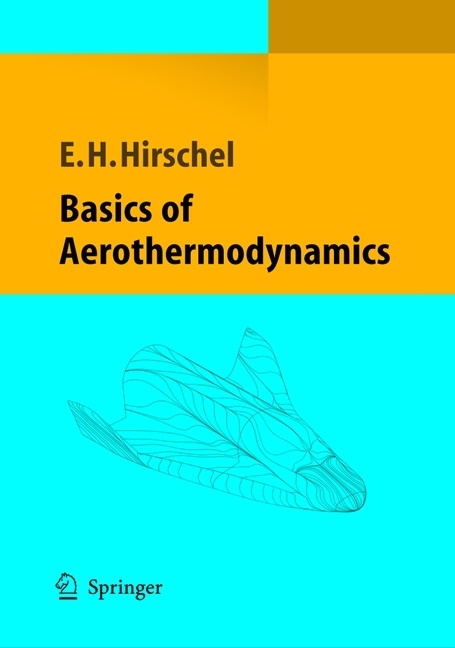Read more
The last two decades have brought two important developments for aeroth- modynamics. One is that airbreathing hypersonic flight became the topic of technology programmes and extended system studies. The other is the emergence and maturing of the discrete numerical methods of aerodyn- ics/aerothermodynamics complementary to the ground-simulation facilities, with the parallel enormous growth of computer power. Airbreathing hypersonic flight vehicles are, in contrast to aeroassisted re-entry vehicles, drag sensitive. They have, further, highly integrated lift and propulsion systems. This means that viscous eflFects, like boundary-layer development, laminar-turbulent transition, to a certain degree also strong interaction phenomena, are much more important for such vehicles than for re-entry vehicles. This holds also for the thermal state of the surface and thermal surface effects, concerning viscous and thermo-chemical phenomena (more important for re-entry vehicles) at and near the wall. The discrete numerical methods of aerodynamics/aerothermodynamics permit now - what was twenty years ago not imaginable - the simulation of high speed flows past real flight vehicle configurations with thermo-chemical and viscous effects, the description of the latter being still handicapped by in sufficient flow-physics models. The benefits of numerical simulation for flight vehicle design are enormous: much improved aerodynamic shape definition and optimization, provision of accurate and reliable aerodynamic data, and highly accurate determination of thermal and mechanical loads. Truly mul- disciplinary design and optimization methods regarding the layout of thermal protection systems, all kinds of aero-servoelasticity problems of the airframe, et cetera, begin now to emerge.
List of contents
The Flight Environment.- The Thermal State of the Surface.- Transport for Momentum, Energy and Mass.- Real-Gas Aerothermodynamic Phenomena.- Inviscid Aerothermodynamic Phenomena.- Attached High-Speed Viscous Flow.- Laminar-Turbulent Transition and Turbulence in High-Speed Viscous Flow.- Strong Interaction Phenomena.- Simulation Means.- The RHPM-Flyer.- Governing Equations for Flow in General Coordinates.- Constants, Functions, Dimensions and Conversions.- Symbols.
Summary
The last two decades have brought two important developments for aeroth- modynamics. One is that airbreathing hypersonic flight became the topic of technology programmes and extended system studies. The other is the emergence and maturing of the discrete numerical methods of aerodyn- ics/aerothermodynamics complementary to the ground-simulation facilities, with the parallel enormous growth of computer power. Airbreathing hypersonic flight vehicles are, in contrast to aeroassisted re-entry vehicles, drag sensitive. They have, further, highly integrated lift and propulsion systems. This means that viscous eflFects, like boundary-layer development, laminar-turbulent transition, to a certain degree also strong interaction phenomena, are much more important for such vehicles than for re-entry vehicles. This holds also for the thermal state of the surface and thermal surface effects, concerning viscous and thermo-chemical phenomena (more important for re-entry vehicles) at and near the wall. The discrete numerical methods of aerodynamics/aerothermodynamics permit now - what was twenty years ago not imaginable - the simulation of high speed flows past real flight vehicle configurations with thermo-chemical and viscous effects, the description of the latter being still handicapped by in sufficient flow-physics models. The benefits of numerical simulation for flight vehicle design are enormous: much improved aerodynamic shape definition and optimization, provision of accurate and reliable aerodynamic data, and highly accurate determination of thermal and mechanical loads. Truly mul- disciplinary design and optimization methods regarding the layout of thermal protection systems, all kinds of aero-servoelasticity problems of the airframe, et cetera, begin now to emerge.
Additional text
From the reviews:
"The book has the merit to cover in a reasonable volume a wide range of topics which are the basics of aerothermodynamics. … For teaching and self-study purposes, problems are given at the end of many chapters. … the author has much experience in teaching. The result is a valuable book that is recommended to people technically interested in the field of high-speed flows, including graduate or doctoral students and engineers." (Jean Cousteix, SIAM Reviews, Vol. 47 (4), 2005)
Report
From the reviews:
"The book has the merit to cover in a reasonable volume a wide range of topics which are the basics of aerothermodynamics. ... For teaching and self-study purposes, problems are given at the end of many chapters. ... the author has much experience in teaching. The result is a valuable book that is recommended to people technically interested in the field of high-speed flows, including graduate or doctoral students and engineers." (Jean Cousteix, SIAM Reviews, Vol. 47 (4), 2005)

